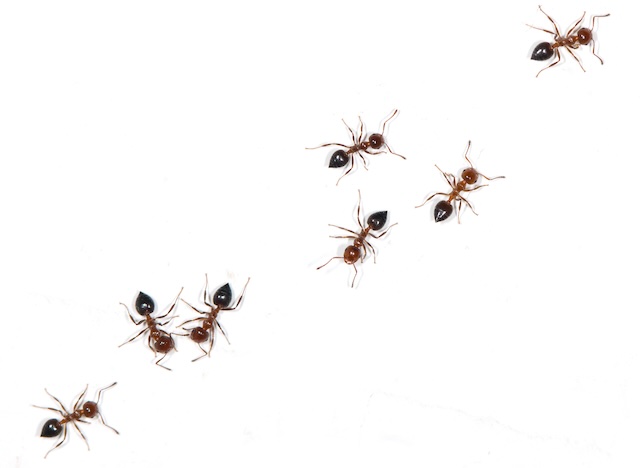Even though pavement ants are small, they can do a lot of damage when they get into your house. Every person needs to understand these tiny invaders and know how to get rid of them. This guide will help you understand pavement ants better by looking at their habits, possible dangers, and the best ways to keep them away.
Get to Know the Pavement Ants: A Quick Start
Pavement ants, whose formal name is Tetramorium caespitum, are a common pest in homes that do well in cities. The name comes from the fact that these small, dark brown to black ants like to build their nests in cracks in the sidewalk. A single pavement ant might not seem like a problem, but a swarm of them can quickly become a problem.
How to Identify and Characterize
The first thing you need to do to get rid of sidewalk ants is to identify them. These ants are small—about 2.5 to 4 millimetres long—but they can do a lot of damage. They are different from other ant species because they are dark and have straight furrows on their heads and chests.
In the spring, active ants fly off to mate. Pavement ants live in colonies that are run by a queen. Figuring out the different groups, like winged reproductive ants and worker ants, can help you figure out what each one does in the colony.
Behaviour and How They Nest
To get rid of sidewalk ants effectively, you need to know how they act. These ants eat whatever they can get their hands on, but their main foods are oils, grease, and protein sources. They are a common household pest because they can get inside through cracks in concrete floors or gaps around patios.
Pavement ants make unique piles of sand or dirt when they nest in the ground under sidewalks, building slabs, or rocks. By following these trails, homes can find the nest and come up with more effective ways to get rid of pests.
The Danger to Your Home
Carpenter ants may be more of a structural threat than pavement ants, but pavement ants can still be a real pain. It can be scary just to think about these pests being in your home. They can also make food dirty if you don’t get rid of them, and their bites can be painful.
Strategies That Work for Homeowners
Seal Points of Entry: Look over the outside of your house carefully and fix any cracks or holes that pavement ants could use to get in.
Maintain Cleanliness: Clean and sanitize your living areas on a regular basis, and clean up crumbs and spills right away. This makes it harder for ants to find food.
Landscaping Tip: Keep plants and mulch away from the base, as these can be used by pavement ants as places to nest. Cut back branches and get rid of any ground growth that isn’t needed.
Professional Pest Control: If you have a pest problem that won’t go away, it’s a good idea to hire a professional pest control service. Professionals in pest control can figure out how bad the problem is, find the nests, and treat only the areas that are infested.
When you’re fighting sidewalk ants, information is your best friend. Pest control experts say that people can keep these annoying bugs out of their homes by learning about their habits and using effective methods. Between regular maintenance and being proactive about pest control, a house will be free of the bothersome presence of pavement ants.
